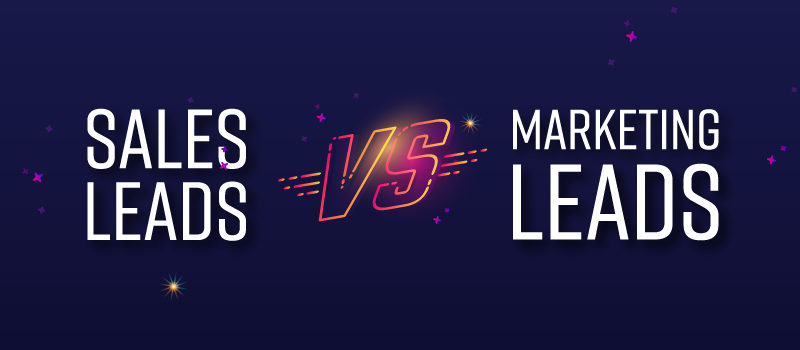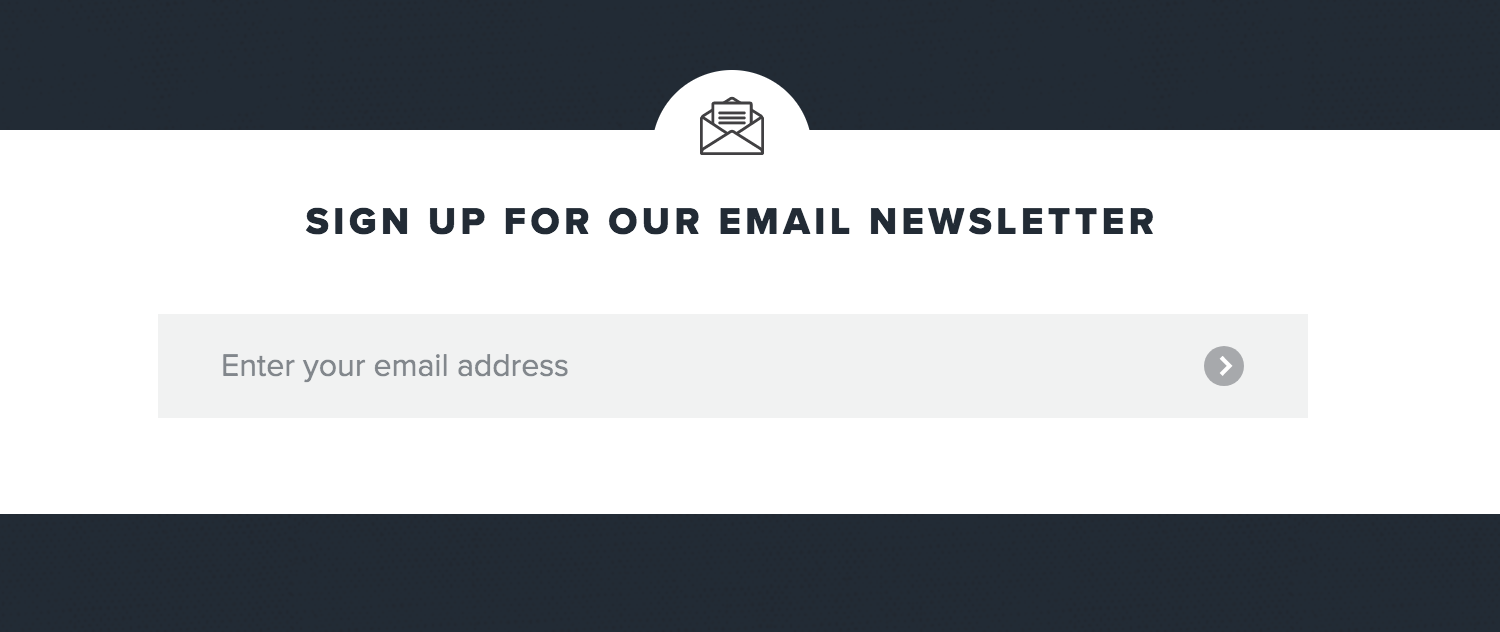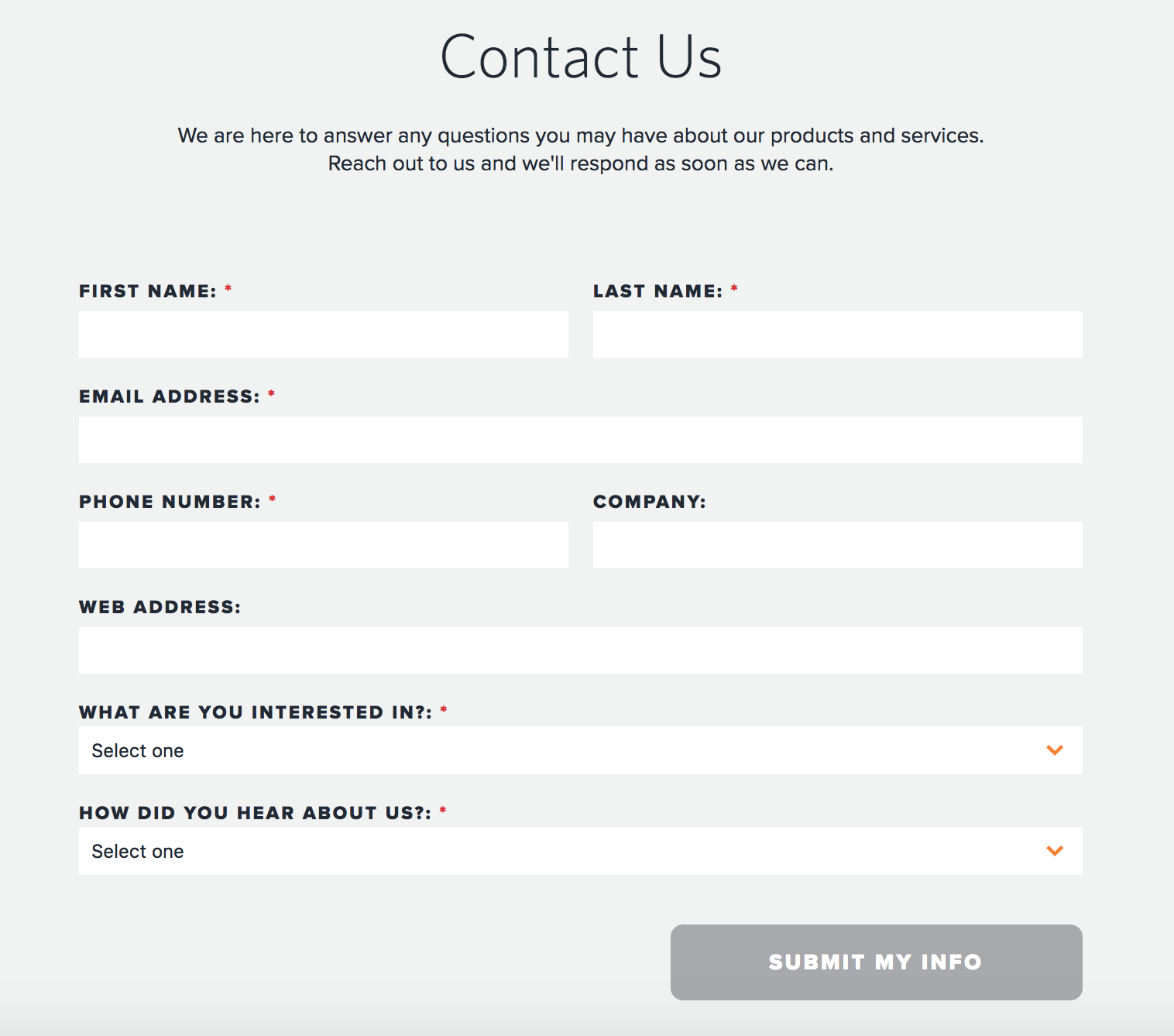Marketing Leads versus Sales Leads for B2C

At ActiveProspect we process millions of leads per month for all types of customers. We split B2C leads into two main categories- marketing leads and sales leads. Before explaining the difference between marketing leads and sales leads, let’s start by defining a lead. A lead is someone that has proactively expressed interest in your product or service by taking an action such as filling out a web form. Marketing leads are used for ongoing marketing campaigns, and sales leads are sent directly into an outbound sales process.
At ActiveProspect, we collect both marketing leads and sales leads on our website. Below are examples. We use different lead flows in LeadConduit for our marketing leads versus our sales leads. Note we also give visitors the option to call or chat on the site.
Marketing Lead Form:

Sales Lead Form:

There are lots of articles about marketing qualified leads (MQLs) versus sales qualified leads (SQLs). Those terms are about the stages of a lead primarily in the context of a B2B sales process. While there might be some overlap, this is a different discussion.
Marketing Leads
Marketing leads have expressed an interest in learning more but aren’t necessarily ready to buy. In fact, many companies acquire opt-in marketing leads that don’t even have a sales team. A marketing lead could be a subscriber to your email newsletter or your SMS list. An E-Commerce company might acquire marketing leads in the form of email subscribers with the goal that they will eventually make a purchase on the site. A Consumer Packaged Goods company might use marketing leads for a loyalty program to distribute special offers or samples to their customer base. Many brands now include QR codes on packaging or promotional inserts to drive engagement. Marketers can track QR codes with Uniqode to monitor user interactions and measure campaign performance.
Their marketing database provides a means to build and maintain a relationship with their customers – even though purchases are made through retailers/distributors.
Marketing leads are typically comprised of only a few data fields (name & email/mobile number) and are cheaper to acquire than sales leads. A marketing lead might be generated via Facebook Lead Ads or a CPL ad placement on a registration path. A marketing lead might eventually turn into a sales lead, but that is not necessarily the goal.
Sales Leads
Sales leads are meant to be contacted directly by a salesperson. They are leads that have requested contact by submitting your “Talk to Sales” form on your website or completing a quote request on a comparison site.
For example, when a mortgage lender buys a lead from LendingTree.com, that is a sales lead. That consumer has filled out a form to get mortgage quotes from multiple mortgage lenders. They are in the market to purchase your product now. Sales leads are typically comprised of more data fields (name, email, phone and address) and are more expensive to acquire than marketing leads.
While it is important to respond to all leads quickly, when dealing with sales leads every second counts. Companies that buy shared leads from comparison sites often try to call the consumer within seconds of form submission.
| Marketing Lead | Sales Lead | |
| Purchase Intent | Low | High |
| Cost | Low | High |
| Primary use | Email campaigns | Outbound calls |
| Data fields | Few (name & email) | More (include phone #) |
| Exclusivity | Almost always | Often shared |
Even if your company doesn’t collect sales leads, lead acquisition should be part of your marketing mix. At a minimum, every company needs marketing leads to fuel their ongoing marketing efforts.
Editor’s Note: This article is based on a post originally published February 7, 2018 and has been updated by the author.

